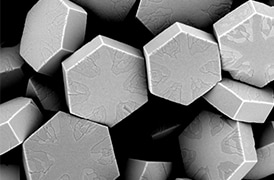Elemental mapping
Through the combination of atom-sized electron probes with high current and highly sensitive X-ray detectors, routine atomic-resolution spectroscopy is now possible with electron microscopes. Energy-dispersive X-ray spectroscopy (EDS, also abbreviated EDX or XEDS) can identify a wide range of elements due to their unique X-ray signals and is ideally suited for the differentiation of individual atoms. With this information, researchers can characterize and modify their materials at the atomic scale, providing unparalleled insight into the behavior of nanomaterials and particles.
As shown in the yttrium titanate examples on this page, individual atomic positions can be distinguished by their unambiguous chemical signal. The individual atomic columns are not only visible, but distinct from their neighbors due to their high contrast; even mixed and pure columns can be differentiated. Additionally, the EDS signal even makes it possible to detect light elements, which have been notoriously difficult to observe at these resolutions.
Such robust, high-quality results are only possible with Thermo Fisher Scientific’s unique ChemiSTEM Technology and the multi-SSD design of the Dual-X/Super-X Detection Systems. With both improved signal generation and detection, the low probe currents required for atomic-scale spatial resolution no longer pose a barrier to X-ray spectrum collection and analysis.



















